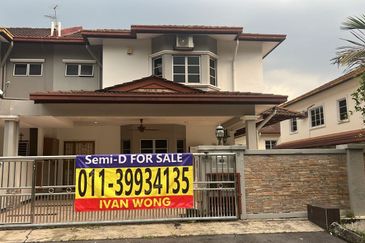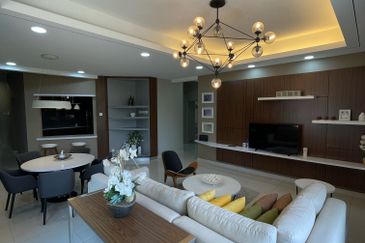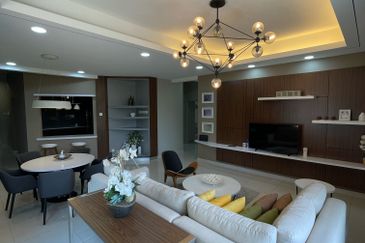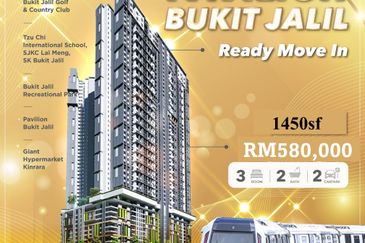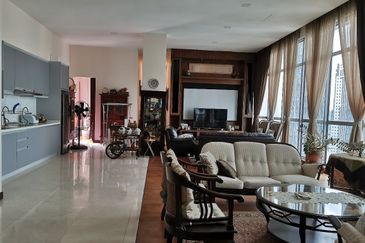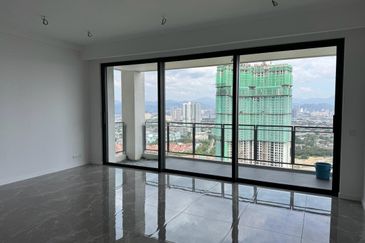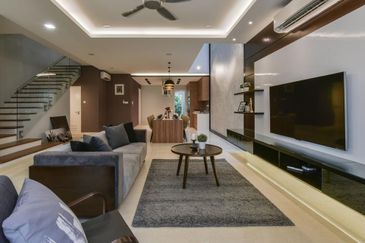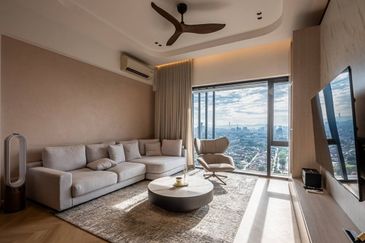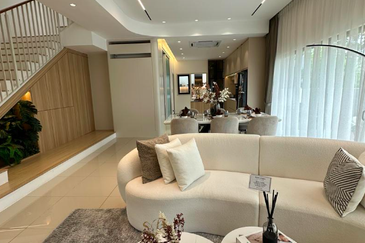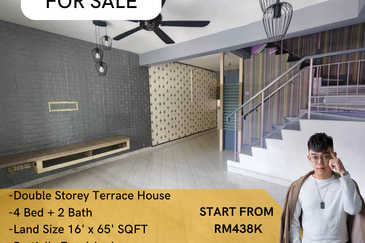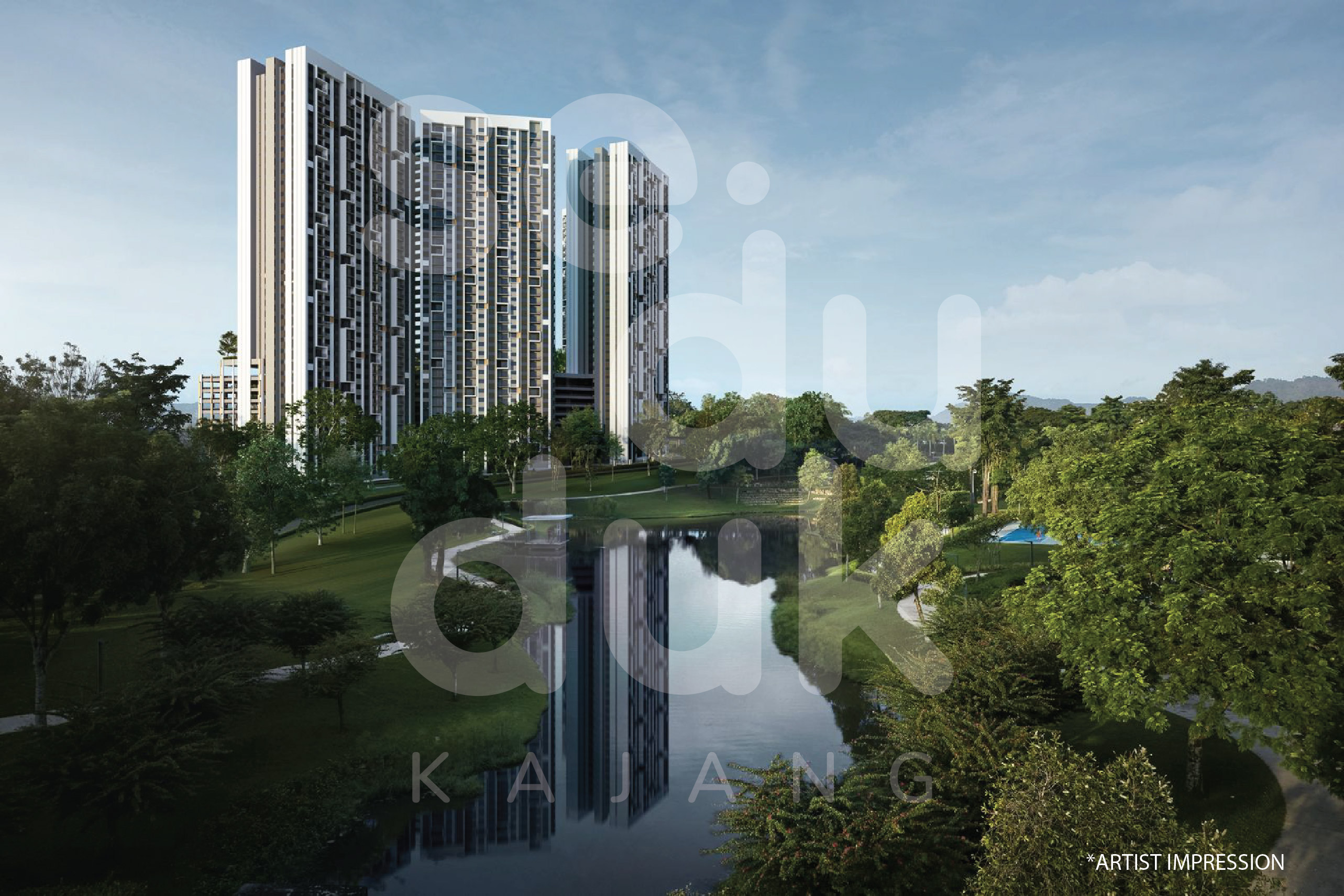Datuk FD Iskandar Mohamed Mansor, Glomac Bhd’s group managing director and CEO, strides into the conference room and with a curt nod and a firm handshake, sits down and says: “Shall we get started then?”
Iskandar’s brisk and businesslike manner gives an idea of his hectic schedule. As Glomac approaches the end of its financial year 2012 in April, it is cranking up efforts to achieve its sales target of RM500 million. Current and upcoming launches include niche developments such as Glomac Centro in Bandar Utama, Reflection Residences in Mutiara Damansara, Suria Stonor in KLCC, Glomac Cyberjaya 2 in Cyberjaya and Zara 0-Lot bungalows in Saujana Rawang.
The developer will continue to launch new products in its three ongoing township developments of Saujana Rawang in Rawang, Seri Saujana in Kota Tinggi, Johor, and Bandar Saujana Utama in Sungai Buloh, which have seen good take-up rates. The estimated value of its launches in FY2012 is RM1.4 billion.
Established in 1988, Glomac comprises more than 40 subsidiaries involved in all facets of the industry — property development, property investment, construction, property management and car park management, among others. It was listed on the Main Board of Bursa Malaysia on June 13, 2000, and has completed 15,000 residential and commercial buildings with a total sales value of over RM4 billion.
At the moment, the developer has landbank for projects with an estimated gross development value (GDV) of more than RM5 billion and is on the lookout for more land. With development land in the Klang Valley getting scarce, a number of developers are looking at alternative areas, even overseas, but Glomac believes it is best for it to maintain its focus on the Klang Valley where demand for property keeps growing.
While it has no plans for now to venture out of its comfort zone, Iskandar does say that the London property market looks attractive, hinting at a future expansion into that market. He also says he has an eye on Indonesia.
For the present, Iskandar trusts that domestic demand for properties will continue to be strong and that opportunities abound in the Klang Valley in tandem with the country’s economic progress.
“We are quite comfortable right now as we are in a good financial position. We have a substantial war chest and are in a net cash position. Each time we acquire land, our GDV increases, which is what we are doing currently,” he explains.
As at Jan 31, 2012, Glomac’s cash pile is at RM314 million.
Iskandar says the developer will be acquiring parcels mostly within the Greater KL area for various projects, including commercial, residential and mixed-use developments. On Feb 21, Glomac announced that it had acquired two parcels for RM44 million through public auction via wholly-owned subsidiary Kelana Kualiti Sdn Bhd.
The 99-year leasehold tracts, measuring 35.98ha and 44.83ha, are located in Ijok, Kuala Selangor, and 15km from the Klang town centre and 22km from the Shah Alam city centre. Iskandar did not provide information on the developer’s plans for these parcels.
Redevelopment option
Due to the scarcity of land in the KL central business district (CBD), developers should look at redeveloping old buildings and projects as an option, remarks Iskandar. “Many of the buildings in KL and Selangor were built in the 1960s and 1970s. We have not looked at the potential for their redevelopment, which could be huge. We are looking at one or two sites for redevelopment,” he says, adding that as long as there is an opportunity to make decent returns to shareholders, Glomac will consider it.
With the near-term outlook for the economy generally cautious, the property sector is bracing for a slowdown. “Malaysia’s gross domestic product (GDP) growth last year was more than 5% and the World Bank predicts a GDP growth of between 4% and 5%. If we can maintain this, I believe we should survive a slowdown,” Iskandar observes.
Like other developers, Iskandar is banking on the implementation of large-scale infrastructure projects, such as the light rail transit extensions and the mass rapid transit projects, to boost economic growth.
“Malaysia will not be entirely sheltered from the eurozone crisis and we should anticipate a slowdown in the economy, but to what degree will the slowdown be?” he wonders.
At a September 2011 briefing, Iskandar said Glomac’s FY2012 net profit growth may be flat due to the volatile external market battering buyer confidence. He may still feel that way, but Iskandar says that by April 30, when Glomac’s financial year ends, he hopes to see better numbers with contributions from the developer’s ongoing township developments and its serviced residence project in Mutiara Damansara, Petaling Jaya.
“It’s better to be conservative than bullish and find out later that the numbers didn’t meet expectations,” he explains. “But seeing the numbers right now, I don’t foresee us having difficulties in improving the last financial year’s results. Looking at our launches in the last six months, take-up rates have been quite healthy.” This is especially so for Bandar Saujana Utama in Sungai Buloh and Saujana Rawang in Rawang.
Current and upcoming launches
Glomac launched several products in November last year, including shopoffices at Glomac Centro in Bandar Utama, Glomac Cyberjaya 2 in Cyberjaya and Zara 0-Lot bungalows in Saujana Rawang.
Glomac Centro sits on 7.6 acres of leasehold land with an overall GDV of RM520 million. It comprises 2-storey shopoffices and serviced apartments. The shopoffices are housed on 4.5 acres with a GDV of RM117 million. The 54 units with built-ups of 2,135 to 3,240 sq ft are priced at RM1.45 million to RM2.48 million. The soon-to-be-launched serviced apartments are located on 3.1 acres with a GDV of RM250 million. The 344 units with built-ups of 1,170 to 1,662 sq ft are priced at RM596,700 to RM928,520.
 The Zara 0-Lot leasehold bungalow project in Saujana Rawang has a GDV of RM130 million and comprises 141 units that are expected to be completed in November 2013. So far, 80% of Phase One has been taken up. The 45ft by 80ft units are priced from RM776,542.
The Zara 0-Lot leasehold bungalow project in Saujana Rawang has a GDV of RM130 million and comprises 141 units that are expected to be completed in November 2013. So far, 80% of Phase One has been taken up. The 45ft by 80ft units are priced from RM776,542.
Phase One of Glomac’s second commercial development in Cyberjaya — Glomac Cyberjaya 2, which sits on seven acres of freehold land with a GDV of RM138 million — was also launched in November 2011. The 22ft by 70ft and 22ft by 50ft shopoffices have built-ups of 3,300 to 10,508 sq ft and are priced from RM1.29 million. Some 50% of these units have been taken up so far.
 Glomac had kicked off its venture in Cyberjaya in 2009 with the 18-acre Glomac Cyberjaya. The freehold project comprises fifteen 3-storey shopoffices and twenty-four 3½-storey shopoffices with built-ups of 4,620 to 6,458 sq ft, and were priced from RM1.45 million to RM3.07 million.
Glomac had kicked off its venture in Cyberjaya in 2009 with the 18-acre Glomac Cyberjaya. The freehold project comprises fifteen 3-storey shopoffices and twenty-four 3½-storey shopoffices with built-ups of 4,620 to 6,458 sq ft, and were priced from RM1.45 million to RM3.07 million.
According to Iskandar, Cyberjaya lacked a commercial centre akin to SS2 in PJ. He says it is the commercial places that draw the crowds.
“You have a population of 280,000 to 300,000 between Cyberjaya and Putrajaya. And there are so many universities in the vicinity. There is a lack of eateries that offer teh tarik and McDonald’s. Students who want McDonald’s need to go all the way to Puchong or Balakong.”
Iskandar reveals that the yet-to-be-launched Phase Two of Glomac Cyberjaya 2 will offer 60 shopoffices, which he hopes will attract tenants such as eateries and banks.
 This month, the developer is launching its 38-storey Reflection Residences in Mutiara Damansara, which comprises 299 units of serviced apartments on 2.6 acres of freehold commercial land with a GDV of RM270 million. There are four types of units with sizes ranging from 1,092 to 1,621 sq ft and prices from RM750 to RM866 psf. The project is located near the Mutiara Damansara shopping strip of Tesco, The Curve and IPC shopping centre and faces Lebuhraya Damansara-Puchong.
This month, the developer is launching its 38-storey Reflection Residences in Mutiara Damansara, which comprises 299 units of serviced apartments on 2.6 acres of freehold commercial land with a GDV of RM270 million. There are four types of units with sizes ranging from 1,092 to 1,621 sq ft and prices from RM750 to RM866 psf. The project is located near the Mutiara Damansara shopping strip of Tesco, The Curve and IPC shopping centre and faces Lebuhraya Damansara-Puchong.
In the KLCC area, Glomac is marketing some units in luxury condominium Suria Stonor. Through wholly-owned subsidiary Berapit Pertiwi Sdn Bhd, Glomac had purchased 10 of the condos from Dekad Darat Sdn Bhd for RM21.3 million and an additional eight from Progressive Berg Sdn Bhd for RM17 million in October 2010.
Suria Stonor was launched in 2005 and completed in 2008, at which point Glomac sold 102 standard units of the project to a financial institution in Singapore. The development sits on 2.06 acres of freehold land and has a GDV of RM384 million. It comprises 138 units with built-ups ranging from 2,900 to 9,200 sq ft.
In October 2010, Glomac bought back 18 standard units with a built-up of 3,282 sq ft. Initially sold at RM1,000 psf, these were purchased by Glomac at a 25% discount. Glomac is now offering buyers the 18 condos at RM1,250 psf.
Johor
The developer has a medium-end township development in Kota Tinggi, Johor, called Sri Saujana on a 450-acre site purchased in 1997 before the Asian financial crisis. At the time, Bursa Malaysia required all property companies going for listing to have at least 1,000 acres of landbank.
Glomac decided to purchase land in Johor as the state was the second most exciting market after the Klang Valley at the time. “However, land in the Johor city centre was expensive then, so we had to look at property located some 20 to 25 minutes away from the city,” Iskandar remarks.
Although golf courses were the craze at the time, Iskandar wanted to build an equestrian club. However, this plan was quickly scrapped when the Asian financial crisis hit. “We were forced to change the concept. So now we have a medium-end township,” he explains. It will be quite some time before Glomac ventures out of the Klang Valley again, he adds.
Strategy
Iskandar is not easily swayed by the negativity of others. This trait became evident in 2006 when Glomac decided to purchase a 57,025 sq ft plot for Glomac Tower in the corner of Jalan P Ramlee and Jalan Pinang in Kuala Lumpur.
“I had my eye on the land for four years,” remarks Iskandar. “At the time, land in central KL was going for RM800 to RM900 psf but the owner was asking for RM1,000 psf, to which we agreed. A lot of analysts downgraded us for that. But it’s not how expensive the land is, but what you can put on it.”
To that end, Glomac built a 40-storey office tower with two retail floors and 722 parking bays on the plot and at end-2007, it sold the building for RM577 million or the equivalent of RM1,160 psf, the highest price for office space sold en bloc in KL. “Suddenly, the analysts were commending Glomac for our action,” Iskandar remarks drily.
“That’s our skill as a developer. This is the only business we know. Some developers are conglomerates with other business arms, but we are strictly into property. I run a tight ship, so I tell my team that we had better be good at what we do because this is the only business we know.”
Iskandar says Glomac always puts itself in the shoes of the purchaser, considering that real estate may be the single biggest investment that a person will make in his life.
Innovation is the key to keeping ahead of the competition, says Iskandar. “Nowadays, when you build shophouses, you have to make them attractive, usable and user-friendly. Al fresco dining is all the rage in KL. So instead of building the full 20ft by 70ft like we used to, we make the shops 20ft by 60ft and offer the extra 10ft as outside space.”
A developer also has to keep up with current market preferences, for example in design and layout. According to Iskandar, 8 to 10 years ago, Balinese concepts were the “in-thing” before the “Zen” craze took over. So a developer must keep up and continuously upgrade its products to cater for current trends and demand.
“You also have to look at supply and demand in the area. If you build serviced apartments in an area that lacks them, your product will most probably do well,” Iskandar reasons.
The interview ends when Iskandar’s personal assistant announces that it is time for his 5 o’clock appointment, and the busy developer dashes off.
This article appeared in City & Country, the property pullout of The Edge Malaysia, Issue 900, Mar 5-11, 2012
TOP PICKS BY EDGEPROP
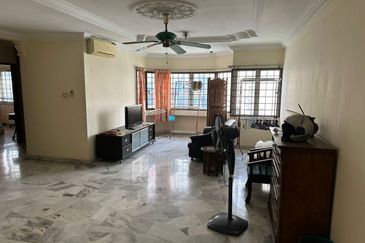
De Tropicana Condominium
Kuchai Lama, Kuala Lumpur
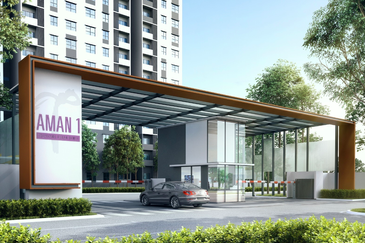
Tropicana Aman 1
Telok Panglima Garang, Selangor
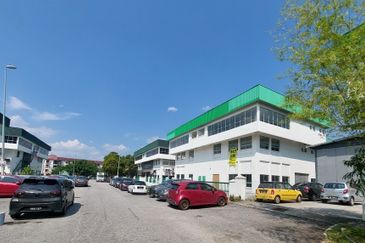
Shamelin Heights Business Park
Cheras, Kuala Lumpur
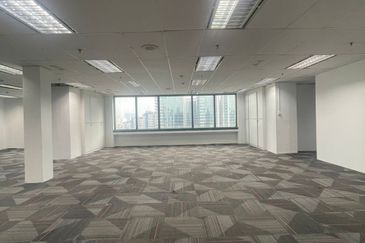
Wisma Pantai ( Wisma Goshen )
Bangsar, Kuala Lumpur
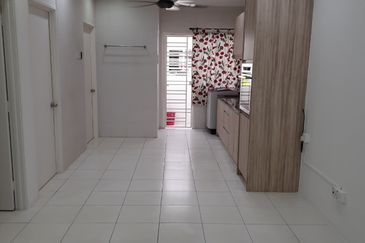
Pearl Villa Townhouse
Bandar Saujana Putra, Selangor

